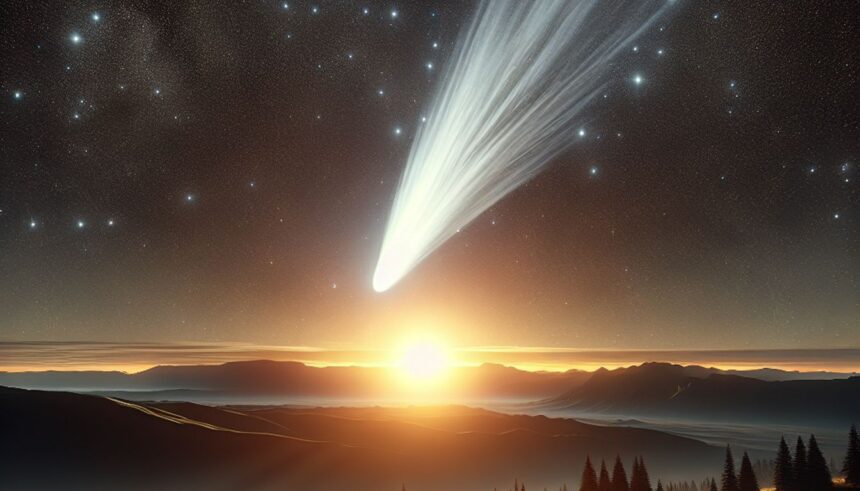This October, a celestial spectacle will grace the night skies over the United Kingdom, offering a rare and stunning visual display. The Comet A3 Tsuchinshan-ATLAS, recently deemed the brightest comet to appear in over a decade, is poised to captivate both seasoned astronomers and casual stargazers alike. Its significant luminosity and accessibility to the naked eye make it an essential observation for anyone intrigued by the marvels of our universe.
Introduction to Comet A3 Tsuchinshan-ATLAS
Discovered by the joint efforts of the ATLAS (Asteroid Terrestrial-impact Last Alert System) and the Purple Mountain Observatory in China, Comet A3 Tsuchinshan-ATLAS represents a fascinating subject of study in the field of astronomy. Its path through the cosmos brings it into optimal visibility within UK skies this October, promising a viewing experience that could be one of the brightest cometary events of the early 21st century.
When and How to Watch the Brightest Comet
For those eager to observe the comet, the best dates range from October 12 to October 30. Viewing conditions are predicted to be optimal just after sunset, when the twilight fades and the sky darkens sufficiently to reveal the comet in all its brilliance. The increased visibility is anticipated thanks to the comet reaching a peak brightness, astonishingly observable even during the day around its maximum approach on October 9.
Scientific Insights: What Makes Comet A3 Tsuchinshan-ATLAS Unique?
The luminosity of this comet is not just a treat for the eyes but also a valuable point of research for scientists. The brightest comet in recent years owes its visibility to an exceptionally reflective coma and a vast tail that enhances its glow through the scattering of sunlight. Furthermore, predictions suggest that as the comet approaches, solar radiation may increase its visibility by expanding its coma and potentially making it one of the most studied comets of the decade.
Photography Tips for Capturing Comet A3 Tsuchinshan-ATLAS
Capturing this celestial event through photography can be profoundly rewarding. Whether you’re using a DSLR camera or a smartphone, aim to shoot in areas with minimal light pollution. Employing a tripod to stabilize your camera can significantly improve the clarity of your shots. Long exposure settings may also be necessary to capture the finer details of the comet’s tail.
Impact on Astrophysics and Further Studies
The appearance of Comet A3 Tsuchinshan-ATLAS provides a unique opportunity for astrophysical studies, contributing valuable data on comet compositions and their trajectories. This event will possibly shed light on the origins of comets and their interactions with other celestial bodies in our solar system.
Events and Gatherings for Comet Viewing
Across the UK, local astronomy clubs and observatories are scheduling events to observe Comet A3 Tsuchinshan-ATLAS. These gatherings are not only an opportunity to view the comet through high-powered telescopes but also a chance to learn more about astronomy and engage with communities who share a passion for the stars.
For those intrigued by the wonders above, the October viewing of Comet A3 Tsuchinshan-ATLAS is a not-to-be-missed event. Its prominence in the UK skies serves as a reminder of the ever-ongoing spectacle of the universe—a show that continues to inspire curiosity and awe among all who look upward.
Conclusion
In conclusion, the arrival of Comet A3 Tsuchinshan-ATLAS offers a perfect fusion of scientific enlightenment and captivating beauty, accessible to all under the October sky. Whether you are an avid astronomer or a newcomer to stargazing, this comet provides an excellent pretext to explore the night sky. Prepare your viewing equipment, mark your calendars, and ready yourself for one of the most exciting astronomy news events of the year.
Remember, opportunities to witness such brilliant displays are rare and fleeting, making this event a truly once-in-a-lifetime spectacle. So keep your eyes on the skies this October and experience the magnificence of Comet A3 Tsuchinshan-ATLAS—an event sure to illuminate the heavens and enrich our understanding of the cosmos.







